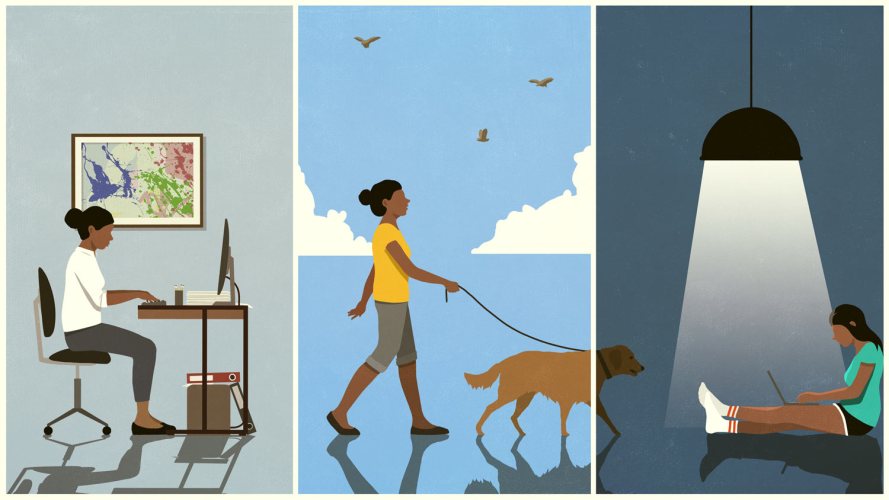Workers’ expectations of how they want to work have shifted in the last two years. With increased remote and hybrid work came more flexible schedules, allowing people to set up their days to suit how they want to work — when and wherever they like. To increase productivity, managers need to ask their teams how they want to work — and support that.
This is still being worked out in the Australian market. According to LinkedIn’s Global Talent Trends Report, flexible work is one of the most valued priorities for Australian workers. Even so, 77% of company leaders say this arrangement is under threat during uncertain economic times, and the vast majority would prefer people to be in the office.
This shows a gap in employee-employer relations that has been widening globally over the last few years. A 2021 Gartner survey showed nearly half of the 10,000 respondents across the U.S., Europe and APAC said having more flexibility led to greater productivity. Before the pandemic, remote work and flexible schedules were outliers. These days, it’s becoming the norm, especially as people’s work and personal lives have become more intertwined. That flexibility has also become easier with tools such as Slack, which connects everyone in your business and supports the way people naturally work together — in real-time or not, in-person and remote.
“Flexibility is not just where and when you work, it’s about choice,” said Sheela Subramanian, vice president, Future Forum at Slack and co-author of “How The Future Works.” “The pandemic has offered an opportunity for people to realise a new way of working and a new way of living. It’s important for us to acknowledge what that looks like, is unique to every individual, and build a way to empower that type of behaviour.”
People historically have had productivity peaks before and after lunch. But in the last two years, research has emerged showing some people – by choice or by necessity – also have a third productivity peak in the evening.
This has created opportunities for managers and leaders to embrace this new working environment, but also strike a balance between giving people free reign and ensuring they still respect others’ time and schedules in order for work to actually get done. Here, we discuss ways to put all of this into practice.
Deliver success now
Learn how Customer 360 helps you increase efficiency, improve results, and lower costs.



Do a meeting audit
To transition to a system allowing people to work when they’re most energised and productive, start by opening up better lines of communication, Tate said.
“You have to talk to each other about what’s working and not working so you can collectively problem-solve and then create the solution,” she said.
Tate suggests conducting a meeting audit at the team and individual levels to determine how many meetings you actually need on any given day, and who needs to attend. Next, set up digital communication and organisational tools, like Slack, to help people easily collaborate, remain on deadline, and see teammates’ availability to have a quick chat. If you work across time zones, create a schedule that takes into account everyone’s locations.
Create a flex team agreement
Another effective tool is a flex team agreement, a contract that outlines how your team works together.
“Team agreements outline norms,” Subramanian said. “Everybody’s work is different, and trying to impose a one-size-fits-all model is not an effective way to engage your employees.”
Each team member can determine what time-dependent tasks need to be completed during core work hours, which collaborative tasks might need virtual or in-person interaction, and which tasks can be handled independently. That’s according to Moira Dunne, productivity consultant and founder of Dublin-based beproductive.ie.
“The important thing is to make a plan for the day and identify the priority tasks,” Dunne said. “This helps people stay focused and get things done regardless of the time of day or location.”
Focus on results
Today’s work-from-anywhere environment has shown people are more productive because they have more autonomy. They’re spending their time focused on their tasks and not being judged on whether they’re physically present.
People want space to work autonomously, but also need guidance from managers, who can help create accountability.
“The manager helps build that structure through very clear goals and deadlines,” Tate said. “Building out very clear, measurable project plans, goals that ladder up to strategy with clear due dates and deliverables helps build that structure.”
Having collaborative technologies in place can also help create autonomy within a digital-first workplace, regardless where people physically work. That said, people should still be available.
“People want flexibility within a framework,” Subramanian said. “You need to be very clear among your team as to when you expect people to be responsive, but otherwise give them the freedom to work on their terms.”
Embrace the power of coaching
With people working at various times of the day, and the lines blurring between professional and personal time, people may feel pressure to perform more or may experience higher levels of stress or anxiety. This has led managers to embrace coaching to help ensure employees’ wellbeing and create a safe space to discuss concerns.
“The role of the manager has fundamentally changed,” Subramanian said. “It’s not just about the work. It’s about understanding the motivators and the detractors for your employees. So get to know them better and foster that connection.”
Since people are working more asynchronously, having more open and honest conversations helps create greater trust among your team. It leads to people having more confidence, better productivity, personal growth and career development. Having more transparency with feedback and support from higher-ups allows people to know it’s okay for them to work whenever.
“We’re seeing that flexibility with some structure has been really beneficial to live your life, take care of your family and community, and be an effective employee,” Subramanian said.






















